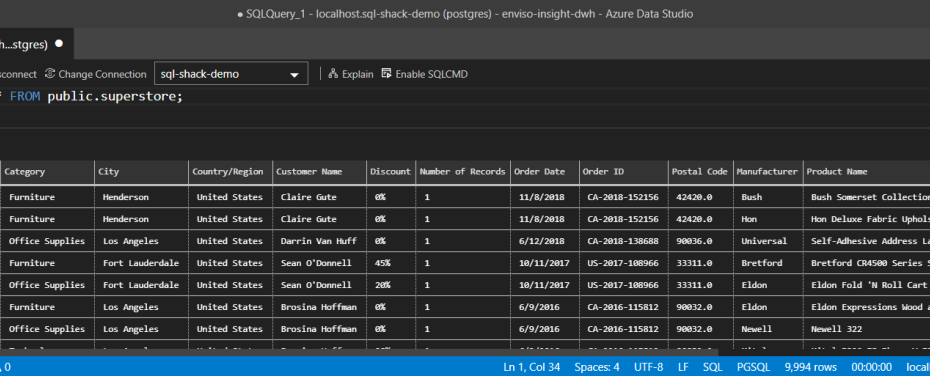Bạn đang muốn tìm hiểu thông tin về chủ đề “How to model most recent version as default version in SQLAlchemy?”. chuyenphatnhanhdhlvn.com sẽ tổng hợp các thông tin để trả lời thắc mắt cho các bạn trong bài viết này. Mời các bạn đọc hết bài viết này để tìm được những thông tin mà mình muốn xem nhé. Bạn cũng có thể xem thêm một số bài viết chủ đề khác tại đây: chuyenphatnhanhdhlvn.com/blog Delete table sqlalchemy, INSERT or Update sqlalchemy, Flask-SQLAlchemy query, Sqlalchemy default value, Datetime sqlalchemy, Filter and sqlalchemy, Sqlalchemy model default value, Select sqlalchemy.
Xem thông tin về How to model most recent version as default version in SQLAlchemy?
Thông tin về câu hỏi
- Câu hỏi: How to model most recent version as default version in SQLAlchemy?
- Thời gian hỏi: Cập Nhập 14 Ngày Trước
- Thời gian trả lời: Cập Nhập 191 Giờ Trước
- Số lượt xem: 6687
How to model most recent version as default version in SQLAlchemy?
Xem video liên quan đến How to model most recent version as default version in SQLAlchemy?
SQLAlchemy Turns Python Objects Into Database Entries
How does SQLAlchemy update data?
SQLAlchemy provides several ways to update data in a database. Here are a few examples:
- Using the
update()method: This method allows you to update one or more rows in a table based on a set of criteria. Here’s an example:
sqlfrom sqlalchemy import update from myapp.models import User stmt = update(User).where(User.id == 1).values(name='John') session.execute(stmt) session.commit()
In this example, we are updating the name of the user with ID 1 to “John”.
- Using object attributes: If you have a model object that represents a row in the database, you can update its attributes and then commit the changes. For example:
sqlfrom myapp.models import User user = session.query(User).filter_by(id=1).first() user.name = 'John' session.commit()
In this example, we are updating the name attribute of the User object with ID 1 to “John”.
- Using SQL expressions: If you need to perform a more complex update, you can use SQL expressions in combination with the
update()method. For example:
sqlfrom sqlalchemy import update from myapp.models import User stmt = update(User).where(User.name == 'Bob').values(name='John', age=User.age + 1) session.execute(stmt) session.commit()
In this example, we are updating the name of all users named “Bob” to “John” and incrementing their age by 1.
Overall, SQLAlchemy provides a flexible and powerful way to update data in a database, allowing you to use a variety of techniques depending on your needs.
Hình ảnh liên quan đến How to model most recent version as default version in SQLAlchemy?
Phát hiện thấy 38 nội dung liên quan đến chủ đề How to model most recent version as default version in SQLAlchemy?.

Bạn có thể xem thêm một số thông tin liên quan đến How to model most recent version as default version in SQLAlchemy? tại đây
- Column INSERT/UPDATE Defaults — SQLAlchemy 2.0 …
- Setting a default value in sqlalchemy – python – Stack Overflow
- Column Insert/Update Defaults
- SQLAlchemy and Alembic notes – Roman Imankulov
- SQLAlchemy and Alembic notes – Roman Imankulov
- How to update existing table rows in SQLAlchemy in Python?
- About refreshing objects in sqlalchemy session – Stack Overflow
- Documentation: 15: 5.2. Default Values – PostgreSQL
- Automatic IDs, None Defaults, and Refreshing Data – SQLModel
- Build a CRUD App with FastAPI and SQLAlchemy – CodevoWeb
- Declaring Models — Flask-SQLAlchemy Documentation (2.x)
- API — Flask-SQLAlchemy 2.0 documentation
- How to Use Flask-SQLAlchemy to Interact with Databases in a …
- Install, uninstall, and upgrade Python packages | IntelliJ IDEA …
Bình luận của người dùng về câu trả lời này
Có tổng cộng 876 bình luật về câu hỏi này. Trong đó:
- 223 bình luận rất tuyệt vời
- 672 bình luận tuyệt vời
- 341 bình luận bình thường
- 44 bình luận kém
- 16 bình luận kém rém
Vậy là bạn đã xem xong bài viết chủ đề How to model most recent version as default version in SQLAlchemy? rồi đó. Nếu bạn thấy bài viết này hữu ích, hãy chia sẻ nó đến nhiều người khác nhé. Cảm ơn bạn rất nhiều.
